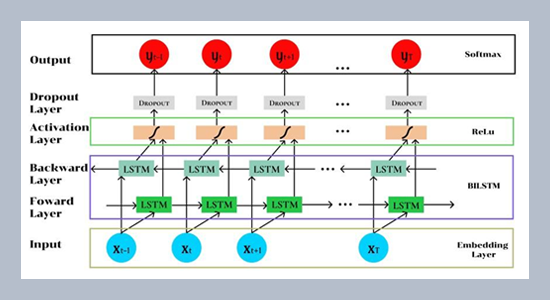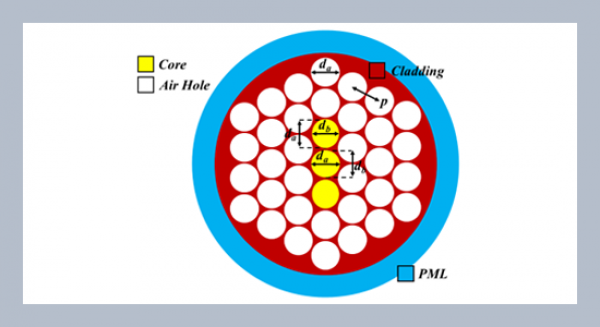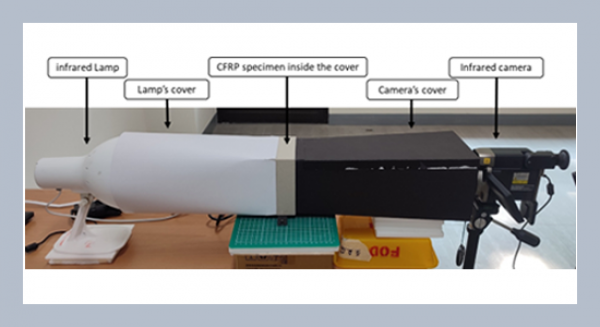REFERENCES
- Adamopoulou, E., Moussiades, L. 2020. An overview of chatbot technology. IFIP Advances in Information and Communication Technology, 584, 373–383.
- Alghifari, R.D., Edi, M., Firmansyah, L. 2022. Implementasi bidirectional LSTM untuk analisis sentimen terhadap layanan grab Indonesia. Jurnal Manajemen Informatika, 12(2), 89–99. (In Indonesian)
- Anki, P., Bustamanm A. 2021. Measuring the accuracy of LSTM and BiLSTM models in the application of artificial intelligence by applying a chatbot program. Indonesian Journal of Electrical Engineering and Computer Science, 23(1), 197–205.
- Anki, P., Bustamam, A., Al-Ash, S.H., Sarwinda, D. 2021. Intelligent chatbot adapted from question and answer system using RNN-LSTM model. Journal of Physics: Conference Series, 1844 012001.
- Calimeri, F., Cauteruccio, F., Cinelli, L., Marzullo, A., Stamile, C., Terracina, G., Durand-Dubief, F., Sappey-Marinier, D. 2019. A logic-based framework leveraging neural networks for studying the evolution of neurological disorders. Theory and Practice of Logic Programming.
- Chicho, T.B., Sallow, B.A. 2021. A comprehensive survey of deep learning models based on Keras framework. Journal of Soft Computing and Data Mining, 2(2), 49–62.
- Chen, R.-C., Dewi, C., Huang, S.-W., Caraka, E.R. 2020. Selecting critical features for data classification based on machine learning methods. Journal of Big Data, 7(52), 1–26.
- Chen, R.-C., Dewi, C., Jiang, X., Yu, H. 2022. Adjusting eye aspect ratio for strong eye blink detection based on facial landmarks. PeerJ Computer Science, 8, e943.
- Chowdhary, K.R. 2020. Natural language processing. In: Fundamentals of artificial intelligence. Springer, New Delhi. pp 603–649.
- Chung, M., Ko, E., Joung, H., Kim, S. J. 2020. Chatbot e-service and customer satisfaction regarding luxury brands. Journal of Business Research, 117, 587–595.
- Chusna, L.N., Tari, R.M.D., Khumaidi, A. 2022. Konfigurasi hyperparameter long short-term memory untuk optimalisasi prediksi penjualan. Faktor Exacta, 15(4), 290–300.
- DeSouza, D.D., Robin, J., Gumus, M., Yeung, A. 2021. Natural language processing as an emerging tool to detect late-life depression. Frontiers in Psychiatry, 12, 719125.
- Dewi, C., Chen R.-C. 2022. Combination of resnet and spatial pyramid pooling for musical instrument identification. Cybernetics and Information Technologies, 22(1), 104–116.
- Dewi, C., Chen, S.P.A., Christanto, J.H. 2023. Deep learning for highly accurate hand recognition based on Yolov7 model. Big Data and Cognitive Computing, 7(1), 53.
- Dhandayuthapani, V. 2022. A proposed cognitive framework model for a student support chatbot in a higher education institution. International Journal of Advanced Networking and Applications, 14(2), 5390–5395.
- Fida, A.B., Ahmed, U., Al-Balushi, Y., Singh, D. 2020. Impact of service quality on customer loyalty and customer satisfaction in islamic banks in the sultanate of oman. SAGE Open, 10(2), 1–10.
- Grattarola, D., Alippi, C. 2021. Graph neural networks in TensorFlow and Keras with Spektral. IEEE Computational Intelligence Magazine, 16(1), 99–106.
- Hardi, R., Pee, C.N.A., Abdullah, B.L.H.M., Pitogo, A.V., Pribadi, S.A., Rusdi, F.J. 2022. Academic smart chatbot to support emerging artificial intelligence conversation. 2022 International Conference of Science and Information Technology in Smart Administration (ICSINTESA). Denpasar, Bali, Indonesia, 194–199.
- Hastomo, W., Aini, N., Karno, B.S.A., Rere, R.M.L. 2022. Machine learning methods for predicting manure management emissions. Jurnal Nasional Teknik Elektro dan Teknologi Informasi, 11(2), 131–139.
- Hu, J., Wang, X., Zhang, Y., Zhang, D., Zhang, M., Xue, J. 2020. Time series prediction method based on variant LSTM recurrent neural network. Neural Processing Letters, 52, 1485–1500.
- Jenneboer, L., Herrando, C., Constantinides, E. 2022. The impact of chatbots on customer loyalty: A systematic literature review. Journal of Theoretical and Applied Electronic Commerce Research, 17(1), 212–229.
- Khurana, D., Koli, A., Khatter, K., Singh, S. 2023. Natural language processing: State of the art, current trends and challenges. Multimedia Tools and Application, 82, 3713–3744.
- Lin, C.-B., Dong, Z., Kuan, Wei.-K., Huang, Y.F. 2021. A framework for fall detection based on openpose skeleton and LSTM/GRU models. Applied Sciences 11(1), 329.
- Long, L., Zeng, X. 2022. Recurrent neural network. In: Beginning deep learning with TensorFlow. Apress, Berkeley, CA.
- Luo, B., Lau, K.Y.R., Li, C., Si, Y.-W. 2022. A critical review of state-of-the-art chatbot designs and applications. WIREs Data Mining and Knowledge Discovery, 12(1), e1434.
- Oruh, J., Viriri, S., Adegun, A. 2022. Long short-term memory recurrent neural network for automatic speech recognition. IEEE Access, 10, 30069–30079.
- Rokhmatun, N.P., Maesaroh, S., Putri, R.R.I., Salmah, S., Kurnianingsih, A.S., Fauziah, N.A., Zamani, A., Atmojo T.J., Widiyanto, A. 2023. The relationship between hospital administration and quality of services: Meta-analysis. Journal of Health Policy and Management, 8(1), 39–47.
- Sands, S., Ferraro, C., Campbell, C., Tsao, H.Y. 2021. Managing the human–chatbot divide: How service scripts influence service experience. Journal of Service Management, 32(2), 246–264.
- Setiawan, I.E. Ferdianto, A., Santoso, J., Kristian, Y., Gunawan, Sumpeno, S., Purnomo, H.M. 2020. Indonesian stance analysis of healthcare news using sentence embedding based on LSTM. Jurnal Nasional Teknik Elektro dan Teknologi Informasi, 9(1), 8–17.
- Suhaili, M.S., Salim, N., Jambli, N.M. 2021. Service chatbots: A systematic review. Expert Systems with Applications, 184, 115461.
- Tai, S.-K., Dewi, C., Chen, R.-C, Liu, Y.-T., Jiang, X., Yu, H. 2020. Deep learning for traffic sign recognition based on spatial pyramid pooling with scale analysis. Applied Sciences, 10(19), 6997.
- Togatorop, R.P., Simanjuntak, P.R., Manurung, B.S., Silalahi, C.M. 2021. Generating entity relationship diagram from requirement specification using natural language processing for indonesian language. Jurnal Komputer dan Informatika, 9(2), 196–206.
- Wang, Q., Peng, R.-Q., Wang, J.-Q., Li, Z., Qu, H.-B. 2020. NEWLSTM: An optimized long short-term memory language model for sequence prediction. IEEE Access, 8, 65395–65401.
- Wei, L., Guo, D., Chen, Z., Yang, J., Feng, T. 2023. Forecasting short-term passenger flow of subway stations based on the temporal pattern attention mechanism and the long short-term memory network. ISPRS International Journal of Geo-Information, 12(1), 25.
- Wintoro, B.P., Hermawan, H., Muda, A.M. Mulyani, Y. 2022. Implementation of long short-term memory in the unila informatics engineering academic information chatbot. EXPERT: Jurnal Manajemen Sistem Informasi dan Teknologi, 12(1), 68–75.
- Yuniar, E., Purnomo H. 2019. Implementasi chatbot “ALITTA” asisten virtual dari balittas sebagai pusat informasi di balittas. Antivirus: Jurnal Ilmiah Teknik Informatika, 13(1), 24–35. (In Indonesian)
- Zhou, L., Gao, J., Li, D., Shum, H.-Y. 2020. The design and implementation of Xiaoice, an empathetic social chatbot. Computational Linguistics, 46(1), 53–93.















